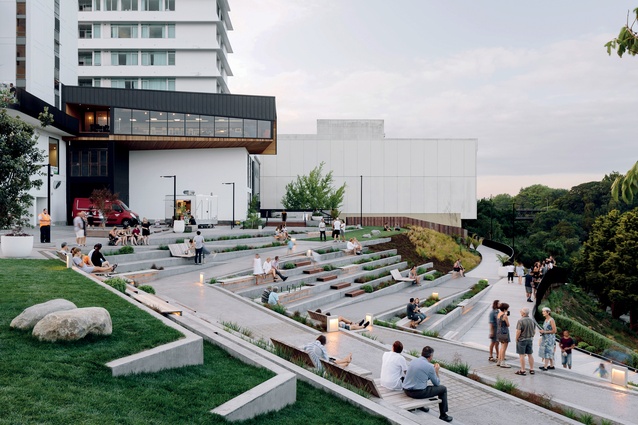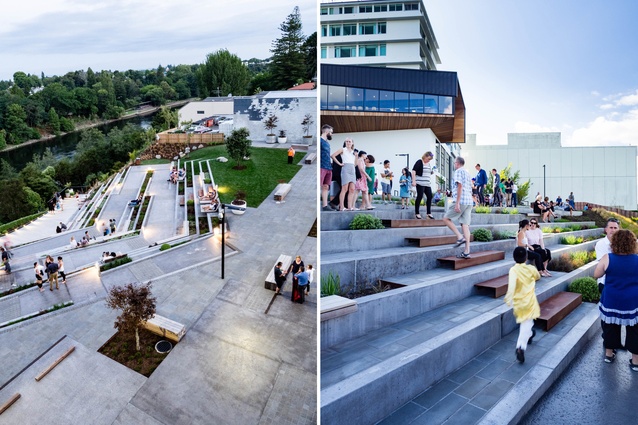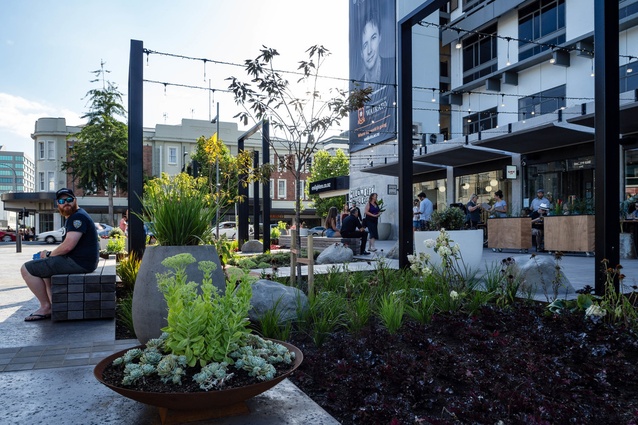Victoria on the River pulls the crowds
Landscape Architecture Aotearoa explores how a redevelopment of Hamilton's riverfront has created an activated public space.
Victoria on the River is a compelling new connection between Hamilton’s city centre and the mighty Waikato River, the city’s defining geographical feature. The expansive amphitheatre-style park mixes detailed urban elements with stepped gardens, terraces and wide boardwalks to create an accessible space for all to enjoy. The overall effect is of peace and calm, whether it’s accommodating the lunchtime crowd or those enjoying a riverside event.
The design includes high-quality paving, complex terracing, bespoke furniture and lighting structures, boardwalks, decked areas and planting for amenity, biodiversity and bank stabilisation. AECOM were the lead consultants on the project, providing all engineering services, landscape architecture, project management, archaeological contamination and planning services.
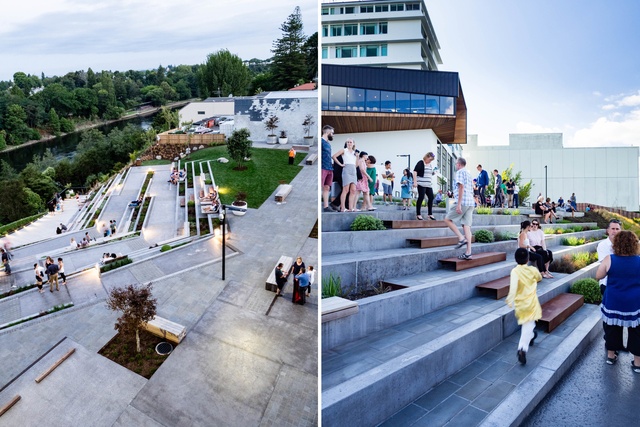
Not only does the park offer fantastic views over the Waikato River, it connects Victoria Street to the river path network for cyclists, walkers and runners. It has provided a lively and functional venue for staging various events and is a popular lunchtime spot for central city workers.
Hamilton is a landlocked city, but very much connected to the Waikato River, which historically served as a lifeline for the region, making it of huge cultural significance for the wider region. The river is a key focus in the Hamilton City Council’s 10-Year Plan to boost the region’s tourism numbers. The development of Victoria on the River supports this plan by attracting people to the river’s edge.
The park could have been designed to be a flat, retained site with minimal orientation of the river. But as the first of many transformational projects for the city, the council wanted it to be innovative. This led to the v-shaped, tiered design by Edwards White Architects, which both retains the cliff face and creates an amphitheatre-style park.
Reducing the severity of the slope helped limit further erosion, and combing retaining walls and sculptural terracing not only stabilised the bank but created a completely different use of the site. Enticing people into the park and encouraging them to linger, the fan-shaped concept retains the cliff face and angles towards both the river and the sun.
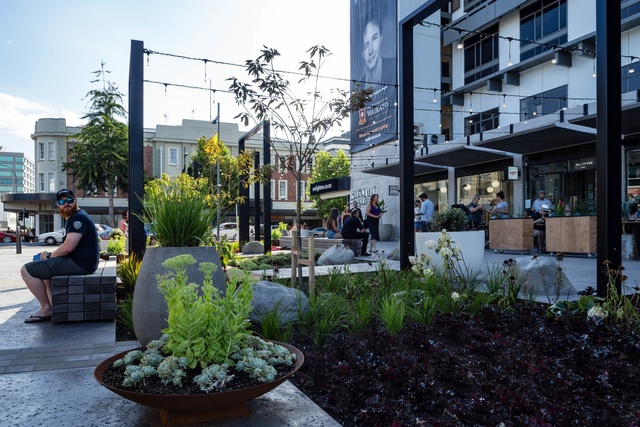
The project is vital for Hamilton. It is seen as a step forward in strengthening the city’s cultural identity by connecting the central city to the Waikato River and creating a space for the public to enjoy.
Victoria on the River builds on and mobilises an already existing hospitality precinct, a more cost- effective approach for Hamilton City Council and an opportunity for the surrounding businesses to strengthen. The overall cost of the project was $6.5 million and was completed in January 2018. When benchmarked to The Terrace, a $140 million Christchurch development, the project performs as a cost effective high standard space.
This article was first published on the Landscape Architecture Aotearoa website, which is published by the New Zealand Institute of Landscape Architects (NZILA).

